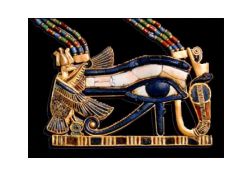![]()
![]()
![]()
Use LEFT and RIGHT arrow keys to navigate between flashcards;
Use UP and DOWN arrow keys to flip the card;
H to show hint;
A reads text to speech;
39 Cards in this Set
- Front
- Back
|
what is the definition of neural plasticity?
|
changes in structure, connections, or function in a neural system in response to experimental manipulations or injury.
the effect outlasts the stimulus |
|
|
where is the CNS located?
|
encased in skull and vertebral column
|
|
|
where is PNS?
|
spinal nerves
cranial nerves from brain stem |
|
|
The nervous system functional classification
describe these: Autonomic Somatic Somatosensory |
Autonomic - homeostatic functions, mostly brain. not aware of this, internal organs, breathing from brainstem
Somatic - voluntary, from brain cortex (higher centers) Somatosensory - perception, proprioception |
|
|
example of nervous system at the
molecular level |
Na+ chemistry
|
|
|
nervous system example of
cellular level |
neuronal function
|
|
|
nervous system example of
systems level |
proprioception
|
|
|
nervous system example of
behavioral level |
breathing
|
|
|
nervous system example of
cognitive level |
learning and memory
|
|
|
what is gray matter?
what are 3 things in gray matter? |
Collections of CELL BODIES (and dendrites)
1. nucleus - cluster of neuron somas (cell bodies) inside the CNS 2. cortex - layered arrangement of neuron somas (cell bodies); a surface covering on part of CNS 3. Ganglia - cluster of neuron somas (cell bodies) outside the CNS |
|
|
what is white matter?
|
collections of myelinated fibers aka a tract
it connects one area of CNS to another area other names for tract are fasciculus lemniscus peduncle column capsule |
|
|
afferent axons go to the _____ horn
|
dorsal
|
|
|
efferent axons comes from the ____ horn
|
ventral
|
|
|
the spinal cord extends from the foramen magnum to ______
|
L1/L2
|
|
|
the spinal cord is _____ w/ the brainstem
|
continuous
|
|
|
The spinal cord extends from ____ to ____
|
atlas (C1) to Conus Medularis (L1/L2)
|
|
|
there are ____ pairs of spinal nerves
|
31
|
|
|
in the spinal cord, there are cervical and lumbar _____
|
enlargements
|
|
|
the _____ connects the cerebrum w/ the spinal cord, and it contains these three things
|
brainstem
contains: midbrain, pons, medulla |
|
|
____ nerves are sensory, motor, or mixed
|
cranial nerves
|
|
|
the _____ deals w/ behaviors necessary for survival: breathing, feeding, drinking, sleep, sexual function, emergency responses - autonomic functions
|
brainstem
|
|
|
the _______ regulates the overall activity level of the spinal and cerebral neurons, and acts as a SIMPLE CONDUIT
|
brainstem
|
|
|
The ___ has two primary functions
1. comparing actual movement w/ intended movement 2. adjusting movement as necessary |
cerebellum
|
|
|
what are two primary functions of the cerebellum?
|
1. compares actual movement w/ intended movement
2. makes movement adjustments as necessary other jobs of cerebellum include -modulating activity of descending pathways -coordination and movement |
|
|
what is in the cerebrum?
|
1. Diencephalon (bilateral nuclei, thalamus and hypothalamus)
2. cerebral hemispheres (basal ganglia, limbic structures, cortex/lobes) |
|
|
what two things are in the diencephalon?
|
thalamus, hypothalamus
diencephalon is in the cerebrum |
|
|
what does the thalamus do?
|
its a relay station for SENSORY INFO
|
|
|
what does the basal ganglia do?
|
control movement
ex: parkinsons |
|
|
the ______ are responsible for emotion, learning, and memory
|
limbic structures
|
|
|
the ____ covering on outside of brain, complex thought processes
|
cortex/lobes
|
|

the _____ is the site for reasoning, language, non-verbal communication, intelligence, personality
|
cerebral cortex
(in the cerebrum) |
|
|
definition of lesion
|
an area of damage or dysfunction
|
|
|
a ____ lesion is limited to a single location. example is a spinal cord tumor. most traumas are this type of lesion
|
focal
|
|
|
a _______ lesion is limited to several NON-symmetrical locations. examples are MS, metastasized tumor.
|
multifocal
think non-symmetrical |
|
|
a ____ lesion is affecting bilaterally SYMMETRICAL structures. It DOES NOT cross the midline as a single lesion
an example is Alzheimer's |
diffuse
|
|
|
symptoms during neurologic evaluation
_____: minutes/hours to maximal signs. trauma or vascular event (stroke) |
acute
|
|
|
symptoms during neurologic evaluation
_____: progressing to maximal signs over a few days (immune problem, toxicity inflammatory) |
subacute
|
|
|
symptoms during neurologic examintation
_____: gradual progression over months or years (tumor, degenerative condition, parkinsons) |
chronic
|
|
|
_____ convey info short distances, and are completely contained within the CNS
|
interneuron
|

